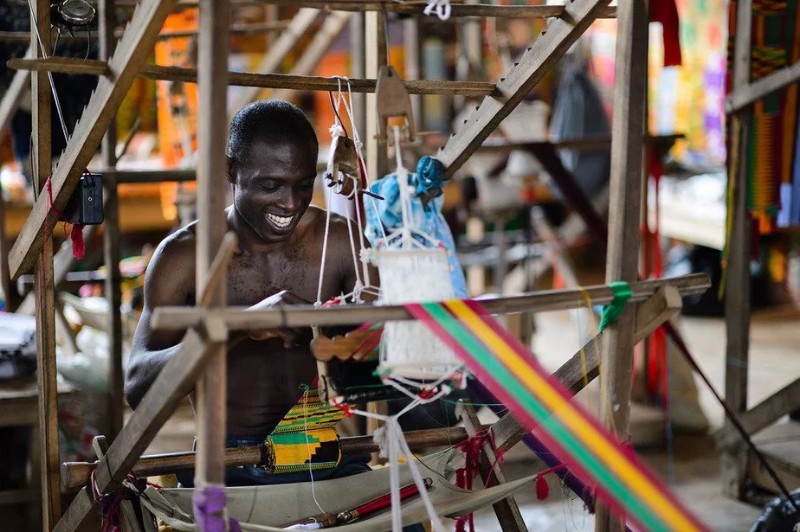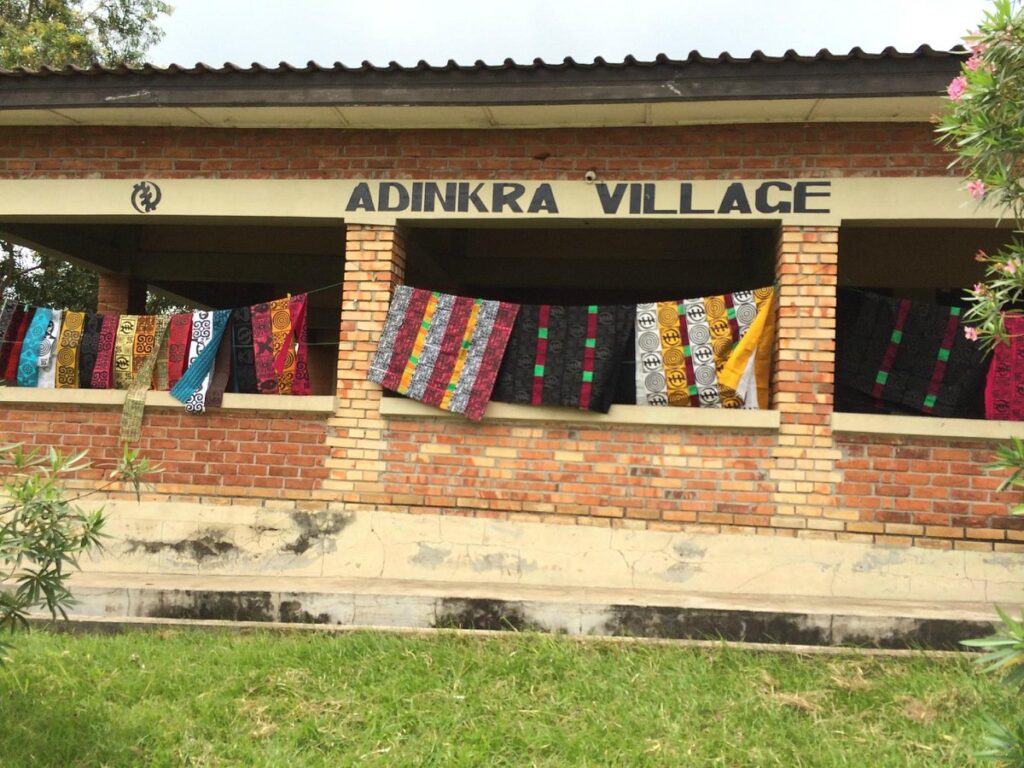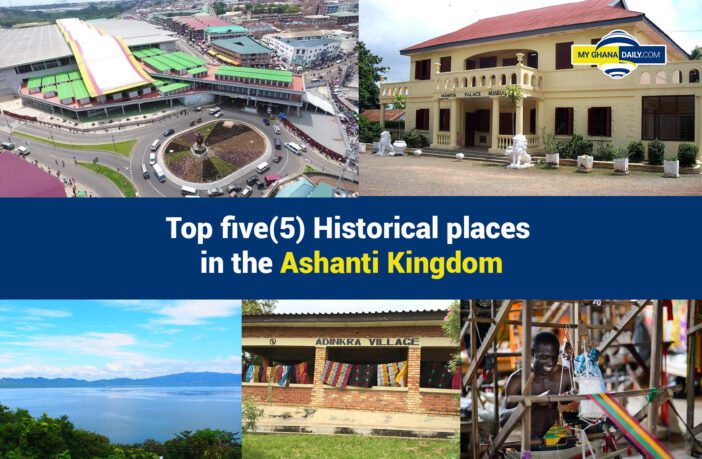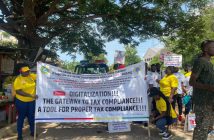As defined time and again, culture is said to be the ideas, customs, and social behavior of a particular people or society. With one look at a community and its structures, one can easily tell the way of life of the people in said community.
Just a Vine Deloria, Jr., a Lakota scholar, once said, “Every society needs sacred places. A society that cannot remember its past and honor it is in peril of losing its soul. “
Walk with me today, as we look at five key sites found in the Ashanti Region of Ghana that tell the story of the belief systems of the people and their struggles through wars, amongst others.
Manhyia Palace

Manhyia Palace (Photo Credit: Wikipedia)
The Manhyia Palace (Akan language meaning “Oman hyia” – gathering of the people) is the seat of the Asantehene of Asanteman, as well as his official residence. It is located in Kumasi, the capital of the Ashanti Region.
The palace built in 1925 by the British was erected some time after the Third Anglo-Ashanti War in 1874, when the British destroyed the original palace built by the Ashantis. The British were said to have been impressed by the size of the original palace and the scope of its contents, which included “rows of books in many languages,” but due to events in the War of the Golden Stool, the British demolished the royal palace with explosives.
Upon the return from exile of the Asantehene Nana Prempeh I from the Seychelles Islands, the building was offered to him for use as his residence. This was because, prior to the Asantehene’s exile, his old palace had been burnt down in the Yaa Asentewa War. The war that was fought between the British and the Asantes was because of the refusal of the Asantehene to offer the golden stool to the then governor of the Gold Coast.
Weaving Village of Bonwire Kente

Bonwire Kente Village (Source: Visit Ghana)
Kente, a fabric made and worn by Ghanaians for special occasions and events, has been made since the 17th century in Adanwomase, the royal weaving village for the Asante king.
The history of weaving in Africa can be traced way back to 3000BC, and it has since developed, improved, and evolved to what we have today. Kente fabric originated in the Asante kingdom around the 17th century and is now a fabric that is worn in all parts of Ghana and beyond today. According to legend, two friends from the town learned how to weave by watching how a spider spun its web. The two brothers named “Kuragu” and “Ameyaw” in around the middle of the 17th century were hunters by profession. They studied the spider’s ways and manners in weaving its nest in the forest. After they did some experiments, they came up with a type of fabric commonly known in the Asante-Twi as “Nwin-Ntom,” meaning “woven-cloth” in the English language. They showed their discovery to the chief of Bonwire at that time, who was called Nana Bobie Ansah. He accompanied them to Kumasi to show their invention to the King of the Ashanti, Otumfuo Opemso Osei Tutu I. The King was interested in this discovery and adopted it as a royal art. “Gagamuga” was the first cloth that was made. Years later, the two brothers improved the form of their discovery. This new form had the appearance of the surface of a basket locally known as “Kenten”. The people of the town called the new design Kenten-Nwin-Ntoma, a woven-basket-cloth. It was later changed to Kente. The new King of the Asantes, called Otumfuo Okatakyie Opoku Ware, created a Kente-stool for the two brothers after they reported the improved design to him in 1721.
The weaving tour includes a visit to the community kente workshop, where guests can try their hand at thread spinning, warping, and weaving, as well as a trip to the village shops to buy kente products and other crafts. The tour continues to the chief’s palace, the traditional healer’s shrine, the oldest house in the area (over 300 years old), a cocoa farm, and ends up at a forest shrine.
Kejetia Market

Kejetia Market (Photo Credit: Wikipedia)
It is said to be one of the biggest markets in Africa, containing at least 11,000 stalls and no fewer than 40,000 people working there. It is characterized by many brown roofs that can already be seen from afar, where you will find different wares and goods for sale. A trip to the Kejetia Market gives one the feeling of the art of bargaining, buying, and selling among a community of mostly women who treat each other as family.
Ntonso Adinkra Village

Ntonso Adinkra Village (Photocredit: Visit Ghana)
Ntonso village is where Adinkra cloth printing is done. The prints are made with dyes and the stamps are made from calabashes. You will be told about the history of the people, their crafts, and how to make the prints at the Ntonso Visitor Center.
Ntonso is the homeland of adinkra cloth and the only place in Ghana where traditional adinkra, a cloth famed for its symbols and proverbial wisdom, is made locally from scratch. The cloth was originally worn only for funerals in the Ashanti Region and was produced mainly in black, brown, and red. These days, however, it is made in all colors and used throughout Ghana. Ntonso has a new visitor center and lays on official guided tours.
Tourists to the town learn about the history and messages behind these traditionally famous symbols, such as Sankofa, Denkyem, and Duafe.
Lake Bosumtwi

Lake Bosumtwi (Photocredit: Visit Ghana)
Lake Bosumtwi, the only natural lake in Ghana, is situated within an ancient impact crater that is about 10.5 kilometres (6.5 mi) in diameter.
It is believed that an ancient meteorite landed in the Ashanti Region and the lake was born. According to legend, the lake was discovered by a hunter who chased an antelope into it. It is believed that the lake rescued the antelope from the hunter. This is why the lake was called the Antelope God Lake until today. This history makes the lake very sacred to the Ashantis.
Source: Manhyia Palace. Ghana Nation Retrieved on 20th of May, 2021
Visit Ghana at http://www.visitghana.com/.Retrieved on 20th of May, 2021
http://ghanadistricts.gov.gh
PC: JetSanza. Visit Ghana, Wikipedia





